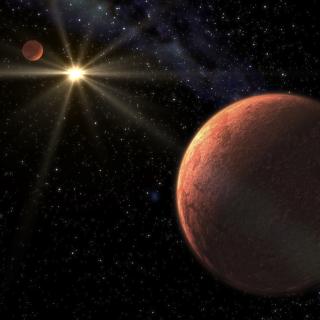Bibcode
Hori, Yasunori; Fukui, Akihiko; Hirano, Teruyuki; Narita, Norio; de Leon, Jerome P.; Ishikawa, Hiroyuki Tako; Hartman, Joel D.; Morello, Giuseppe; Abreu García, Nestor; Álvarez Hernández, Leticia; Béjar, Víctor J. S.; Calatayud-Borras, Yéssica; Carleo, Ilaria; Enoc, Gareb; Esparza-Borges, Emma; Fukuda, Izuru; Galán, Daniel; Geraldía-González, Samuel; Hayashi, Yuya; Ikoma, Masahiro; Ikuta, Kai; Isogai, Keisuke; Kagetani, Taiki; Kawai, Yugo; Kawauchi, Kiyoe; Kimura, Tadahiro; Kodama, Takanori; Korth, Judith; Kusakabe, Nobuhiko; Laza-Ramos, Andrés; Livingston, John H.; Luque, Rafael; Miyakawa, Kohei; Mori, Mayuko; Murgas, Felipe; Orell-Miquel, Jaume; Palle, Enric; Parviainen, Hannu; Peláez-Torres, Alberto; Puig-Subirà, Marta; Sánchez-Benavente, Manuel; Sosa-Guillén, Paula; Stangret, Monika; Terada, Yuka; Muñoz Torres, Sara; Watanabe, Noriharu; Bakos, Gaspar Á.; Barkaoui, Khalid; Beichman, Charles; Benkhaldoun, Zouhair; Boyle, Andrew W.; Ciardi, David R.; Clark, Catherine A.; Collins, Karen A.; Collins, Kevin I.; Conti, Dennis M.; Crossfield, Ian J. M.; Everett, Mark E.; Furlan, Elise; Ghachoui, Mourad; Gillon, Michaël; Gonzales, Erica J.; Higuera, Jesus; Horne, Keith; Howell, Steve B.; Jehin, Emmanuël; Lester, Kathryn V.; Lund, Michael B.; Matson, Rachel; Matthews, Elisabeth C.; Pozuelos, Francisco J.; Safonov, Boris S.; Schlieder, Joshua E.; Schwarz, Richard P.; Sefako, Ramotholo; Srdoc, Gregor; Strakhov, Ivan A.; Timmermans, Mathilde; Waalkes, William C.; Ziegler, Carl; Charbonneau, David; Essack, Zahra; Guerrero, Natalia M.; Harakawa, Hiroki; Hedges, Christina; Ishizuka, Masato; Jenkins, Jon M.; Konishi, Mihoko; Kotani, Takayuki; Kudo, Tomoyuki; Kurokawa, Takashi; Kuzuhara, Masayuki; Nishikawa, Jun; Omiya, Masashi; Ricker, George R.; Seager, Sara; Serizawa, Takuma; Striegel, Stephanie; Tamura, Motohide; Ueda, Akitoshi et al.
Bibliographical reference
The Astronomical Journal
Advertised on:
6
2024
Citations
2
Refereed citations
2
Description
Sub-Neptunes with radii of 2–3 R ⊕ are intermediate in size between rocky planets and Neptune-sized planets. The orbital properties and bulk compositions of transiting sub-Neptunes provide clues to the formation and evolution of close-in small planets. In this paper, we present the discovery and follow-up of four sub-Neptunes orbiting M dwarfs (TOI-782, TOI-1448, TOI-2120, and TOI-2406), three of which were newly validated by ground-based follow-up observations and statistical analyses. TOI-782 b, TOI-1448 b, TOI-2120 b, and TOI-2406 b have radii of , , 2.120 ± 0.067 R ⊕, and and orbital periods of P = 8.02, 8.11, 5.80, and 3.08 days, respectively. Doppler monitoring with the Subaru/InfraRed Doppler instrument led to 2σ upper limits on the masses of <19.1 M ⊕, <19.5 M ⊕, <6.8 M ⊕, and <15.6 M ⊕ for TOI-782 b, TOI-1448 b, TOI-2120 b, and TOI-2406 b, respectively. The mass–radius relationship of these four sub-Neptunes testifies to the existence of volatile material in their interiors. These four sub-Neptunes, which are located above the so-called "radius valley," are likely to retain a significant atmosphere and/or an icy mantle on the core, such as a water world. We find that at least three of the four sub-Neptunes (TOI-782 b, TOI-2120 b, and TOI-2406 b), orbiting M dwarfs older than 1 Gyr, are likely to have eccentricities of e ∼ 0.2–0.3. The fact that tidal circularization of their orbits is not achieved over 1 Gyr suggests inefficient tidal dissipation in their interiors.
Related projects

Very Low Mass Stars, Brown Dwarfs and Planets
Our goal is to study the processes that lead to the formation of low mass stars, brown dwarfs and planets and to characterize the physical properties of these objects in various evolutionary stages. Low mass stars and brown dwarfs are likely the most numerous type of objects in our Galaxy but due to their low intrinsic luminosity they are not so
Rafael
Rebolo López

Exoplanets and Astrobiology
The search for life in the universe has been driven by recent discoveries of planets around other stars (known as exoplanets), becoming one of the most active fields in modern astrophysics. The growing number of new exoplanets discovered in recent years and the recent advance on the study of their atmospheres are not only providing new valuable
Enric
Pallé Bago